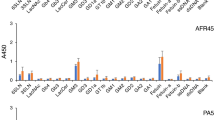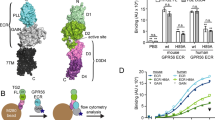Abstract
The monoclonal antibody 3F8 has been described as binding to the ganglioside GD2. This antibody, of the IgG3 isotype, has been used in immunotherapy, radioimmunolocalisation and targeted radiation therapy. 3F8 was originally observed to have a binding profile similar to two monoclonal antibodies, UJ13A and 5.1.H11, characterised as binding to the neural cell adhesion molecule (NCAM). This observation has also been confirmed using a hetero-antiserum prepared against purified NCAM. The cross-reactivity of 3F8 with NCAM has been confirmed by cross-blocking studies with an anti-NCAM antiserum, and by direct immunoprecipitation and gel electrophoresis. In addition, we show that 3F8 binds to human NCAM from 3T3 fibroblasts transfected with NCAM cDNA constructs. It is possible that the common epitope shared by GD2 ganglioside and NCAM involves sialic acid residues common to both the ganglioside and the glycoprotein.
This is a preview of subscription content, access via your institution
Access options
Subscribe to this journal
Receive 24 print issues and online access
$259.00 per year
only $10.79 per issue
Buy this article
- Purchase on Springer Link
- Instant access to full article PDF
Prices may be subject to local taxes which are calculated during checkout
Similar content being viewed by others
Author information
Authors and Affiliations
Rights and permissions
About this article
Cite this article
Patel, K., Rossell, R., Pemberton, L. et al. Monoclonal antibody 3F8 recognises the neural cell adhesion molecule (NCAM) in addition to the ganglioside GD2. Br J Cancer 60, 861–866 (1989). https://doi.org/10.1038/bjc.1989.380
Issue Date:
DOI: https://doi.org/10.1038/bjc.1989.380



